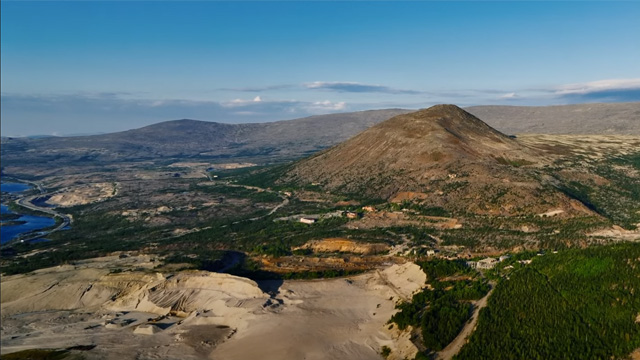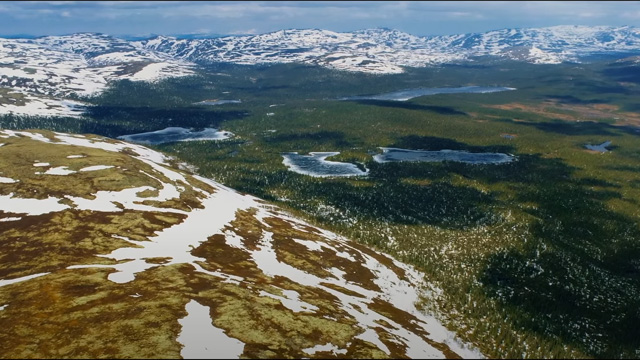Playing the Sound Mosaic or Why Sound Engineers Dislike Seagulls
Do not be afraid: the island is full of sounds —
Of rustling, and whispering, and singing;
They are pleasant, and they do no harm.
At times, it seems as though hundreds of instruments
Are ringing in my ears; and then at times
I hear voices as I wake,
And fall asleep again to this singing.
And golden clouds appear in my dreams.
And a rain of treasures pours upon me…
And I weep that I have woken.
W. Shakespeare
To understand how good sound affects a viewer’s experience of a film, try eating a strawberry while pinching your nose. Without its alluring aroma, the berry seems far less tasty. So it is with sound in cinema — a misty, wild, howling blizzard turns into a dull meteorological phenomenon. A bright sunny day in a thawing spring forest becomes an unremarkable landscape on a flip calendar page. One could go on with examples endlessly, but the point is the same — without sound, any picture is just a picture, unable to convey the emotions, sensations, and thoughts it might otherwise awaken even in a casual viewer.
thoughts it might otherwise awaken even in a casual viewer.
The importance of sound in video production and the work of sound engineers is hard to overstate. Every project is inherently unique, with countless nuances that cannot be found in sound libraries or sketched schematically. And one can never be fully prepared for it. Because only in the process do moments, phenomena, and subtleties emerge that even the most thorough preparation cannot foresee. For instance, did you know that a Black Sea seagull cries differently from a polar seagull? And that this becomes apparent only when the seagulls cry as a flock? Their solo calls are almost indistinguishable. One might think — what does it matter to the viewer, a seagull is a seagull, even in Africa. But no — when it comes to voicing seagulls, our perception has played a cruel trick on sound engineers.
It turns out that, even without knowing where these blasted seagulls are from, our brain paints a picture in precise accordance with their habitat. The cries of Black Sea gulls evoke sensations of a warm Russian resort, while Murmansk gulls make one shiver at the association with polar sea winds. Add the chatter of southern gulls to footage of an icebreaker — and the film loses its resolute northern spirit. And that is a glaring flaw.
That is why the sound engineer’s work on a project begins right on set, where the Master of Sound carefully records not only the actors’ lines but also the thousands of nuances of the surrounding sounds, so that later, when handed the edited video, they can assemble this sound mosaic into a perfect picture.
engineer’s work on a project begins right on set, where the Master of Sound carefully records not only the actors’ lines but also the thousands of nuances of the surrounding sounds, so that later, when handed the edited video, they can assemble this sound mosaic into a perfect picture.
But alas, the sound does not always end up in the hands of the person who worked on it on set. Sometimes the film is voiced by completely different people. The film is shot, the sound partially recorded, and this audiovisual stew is simply passed on to sound engineers, who must now turn it into a filigree, flawless, vibrant dish. This is exactly what happened with one of the projects handled by the Sound Design Department of Omelchak Multimedia Studio. From the rough sound edit of the full-length documentary Monchegorsk, our sound masters had to assemble, voice, process, and mix a universal distribution version for integration of the master file into the video file assembled at Rek.A Studio.
hands of the person who worked on it on set. Sometimes the film is voiced by completely different people. The film is shot, the sound partially recorded, and this audiovisual stew is simply passed on to sound engineers, who must now turn it into a filigree, flawless, vibrant dish. This is exactly what happened with one of the projects handled by the Sound Design Department of Omelchak Multimedia Studio. From the rough sound edit of the full-length documentary Monchegorsk, our sound masters had to assemble, voice, process, and mix a universal distribution version for integration of the master file into the video file assembled at Rek.A Studio.
First, the entire film had to be synchronized with the sound. Because there were numerous soundtracks, all in rough versions, separate from the picture. This stage is the most tedious and monotonous — minimal creativity, maximum focus and patience, since every moment of the 120-minute film had to align perfectly with all its soundtracks. Once all the knocks, whistles, chimes, clangs, stomps, crunches, trills, cries, rattles, and breezes recorded on set were placed in their proper spots, cleaned of extraneous noise, and brought to uniform volume levels, the search for and creation of SFX effects began, along with the sounds missing from the recorded material. The walrus’s exhale by the ship’s side at the 72nd second, a breath of stray solar wind on a quiet polar morning at the 42nd, the scuffle of freshly caught herring in the trawl at the 61st.
And at last, everything sounds as it should. The dynamic and spatial processing of voices and ambient sound begins, depending on the scene’s space and in exact accordance with the director’s wishes. After all, a walrus by the ship’s side does not sound like a walrus on an ice floe — it needs a metallic “sheen” to its sound; and the voices of people on the pier should be dissolved by the wind from the northern sea, yet still perfectly audible to the viewer.
Weary but satisfied, the sound engineers — who by now had absorbed all the shades of Murmansk speech and sighed in a distinctly walrus-like way — began the final mixing and mastering in compliance with the EBU R 128 technical standard.
That’s it. The work on the project is complete. The film is ready, and it is exactly as the director envisioned it. And now you can see it too. Here, on our website in the Portfolio section: the film Monchegorsk.
https://www.omelchak.com/proekty/monchegorsk/